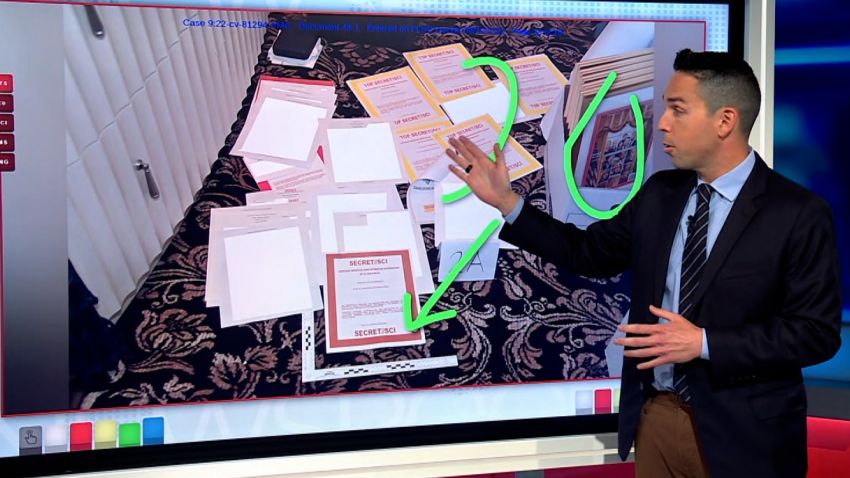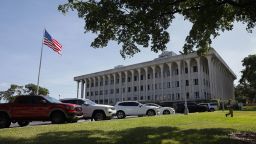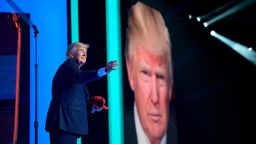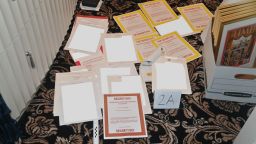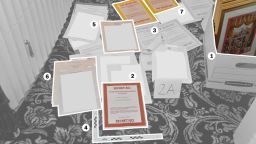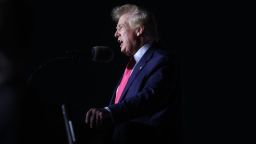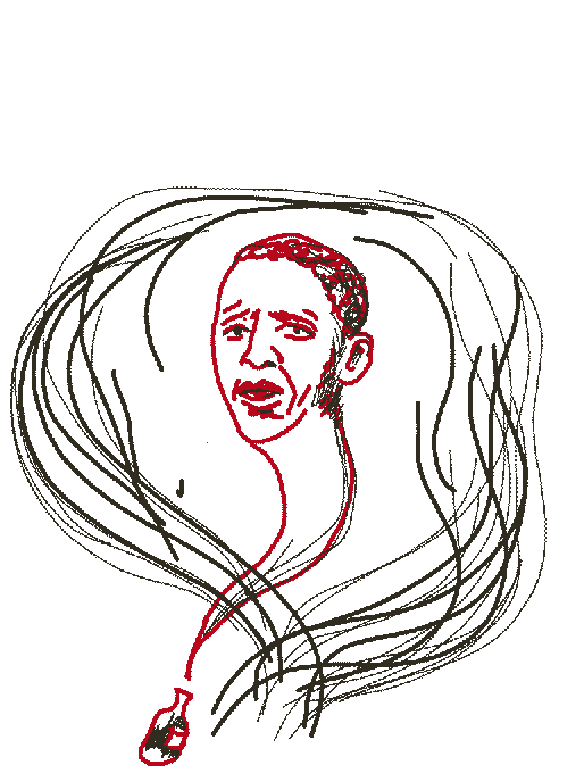Former President Donald Trump and his representatives have offered up a dizzying flurry of defenses in the wake of the FBI search of his Mar-a-Lago resort and residence in early August – and some of their claims are false, uncorroborated or sharply disputed.
Here is a look at the facts, as we know them today, around five of the public arguments Trump and his team have made in the wake of the search.
The claim: Trump declassified everything
The Justice Department said in a court filing this week that the search of Mar-a-Lago resulted in the seizure of more than 100 unique documents with classification markings. But in posts on his social media platform, Trump has argued that he had declassified all of the documents in his possession.
“Number one, it was all declassified,” he wrote in a post on August 12. “Lucky I Declassified!” he wrote in a post this Wednesday.
Trump’s comments about this supposed declassification have been very vague. But conservative writer John Solomon, one of the people Trump named as a representative in his dealings with the National Archives and Records Administration (NARA), was more specific in a Fox appearance on August 12. Solomon read a statement, which he said was from Trump’s office, claiming that Trump “had a standing order…that documents removed from the Oval Office and taken to the residence were deemed to be declassified the moment he removed them.”
Facts First: Trump and his team have not provided any proof that Trump actually conducted some sort of broad declassification of the documents that ended up at Mar-a-Lago – and, so far, his lawyers notably have not argued in their court filings that Trump did so. Eighteen former top Trump administration officials, including two former White House chiefs of staff who spoke on the record, told CNN in August that they never heard of a standing Trump declassification order when they were serving in the administration and that they now believe the claim is false. The former officials used words like “ludicrous,” “ridiculous” and “bullsh*t.”
“Total nonsense,” said one person who served as a senior White House official. “If that’s true, where is the order with his signature on it? If that were the case, there would have been tremendous pushback from the Intel Community and DoD, which would almost certainly have become known to Intel and Armed Services Committees on the Hill.”
It’s important to note that the laws under which the Justice Department is now investigating possible crimes – statutes about the willful retention of national defense information, obstruction of a federal investigation, and the concealment or removal of government records – do not require documents to be classified for a crime to have been committed. (A grand jury subpoena in May and the search warrant in August both sought documents with “classification markings,” not specifically documents that are currently classified.) Also, there would be major questions about the legal validity of any broad “standing order” to automatically declassify any document Trump carried out of a certain room.
But first things first: Trump has shown no corroboration for the claim that he did issue such an order.
The Justice Department said in the court filing this week that Trump’s representatives never asserted that documents had been declassified either when they voluntarily turned over 15 boxes that included 184 unique documents with classification markings in January (after an extended back-and-forth with NARA) or when responding to the grand jury subpoena in June, when they returned another package of documents that included 38 additional unique documents with classification markings.
– CNN’s Jamie Gangel, Elizabeth Stuart and Jeremy Herb contributed to this item.
The claim: The feds could’ve just asked for the documents
Trump has argued that the search was unnecessary because the federal investigators could have simply asked for the documents from his team, which he claimed had been fully cooperative.
“They could have had it anytime they wanted—and that includes LONG ago. ALL THEY HAD TO DO WAS ASK,” Trump posted on his social media platform on August 12.
Facts First: It is not true that federal investigators could have long ago obtained the government records in Trump’s possession just by asking. By the time of the search, the federal government had been asking Trump for more than a year to return records from his presidency. Even when the Justice Department went beyond asking in May and served Trump’s team with the subpoena for the return of all documents with classification markings, Trump’s team returned only some of these documents – and then, in June, Trump lawyer Christina Bobb signed a document certifying on behalf of Trump’s office that all of the documents had been returned, though that was not true.
In other words: Trump claimed that the Justice Department could have just asked for the documents “LONG ago” even though his team explicitly and inaccurately told the department in June that there were no documents left to ask for. Relatedly, the department has called into question how cooperative Trump’s team was.
In its court filing this week, the department asserted that investigators “developed evidence that government records were likely concealed and removed from the Storage Room” at Mar-a-Lago “and that efforts were likely taken to obstruct the government’s investigation.” They said of the August search: “That the FBI, in a matter of hours, recovered twice as many documents with classification markings as the ‘diligent search’ that the former President’s counsel and other representatives had weeks to perform calls into serious question the representations made in the June 3 certification and casts doubt on the extent of cooperation in this matter.”
The claim: It was the bureaucrats’ fault
A member of Trump’s team has tried to pin blame on the General Services Administration, a federal agency that provides transition office space and assistance services to the outgoing president.
Kash Patel, a former Trump administration official whom Trump named as another representative to NARA, said on Fox on August 12 on that “the GSA has since come out, the Government (sic) Services Administration, and said they mistakenly packed some boxes and moved them to Mar-a-Lago. That’s not on the President. That’s on the National Archives to sort that material out.” Patel said that even if material was classified, which is “highly unlikely,” the fact that the GSA boxed the material “should have been the end” of the matter.
Facts First: The GSA has repeatedly rejected Patel’s claim. The agency says it had no role in deciding which documents from Trump’s outgoing transition office in Virginia would be placed in boxes or which boxes would be shipped to Mar-a-Lago – and that these decisions were made by Trump’s team alone.
A GSA spokesperson said in a statement last week that it was Trump’s team, not the GSA, that packed the boxes and that it was Trump’s team, not the GSA, that put these boxes on pallets and shrink-wrapped them for shipping from Trump’s transition office in Virginia. GSA did enter into a support contract for the actual September 2021 shipping, but “not for the packing of the boxes,” the spokesperson said – and “GSA did not examine the contents of the boxes and, accordingly, had no knowledge of the contents prior to shipping.”
It is not clear how many of the government documents recovered at Mar-a-Lago were part of the September 2021 shipments from Virginia. It is theoretically possible that some documents were taken to Mar-a-Lago at other times and in other ways.
- CNN’s Kristen Holmes contributed to this item.
The claim: The FBI may have planted evidence
Trump lawyer Alina Habba said on Fox on August 9: “I’m concerned that they may have planted something; you know, at this point, who knows?” The next day, Trump suggested on social media that it was shady that the FBI would not allow witnesses, such as his lawyers, to be in the rooms being searched and “see what they were doing, taking or, hopefully not, ‘planting.’”
Facts First: There is zero evidence that the FBI planted anything at Mar-a-Lago. And it is routine, not suspicious, for searches to be conducted without witnesses such as lawyers being in the room; lawyers don’t have a right to watch.
The claim about possible “planting” is impossible to definitively debunk at this point. Once more, though, Trump and his allies have not shown even a hint of proof that it is true.
The claim: Obama took tens of millions of documents
The week of the search, Trump turned to a familiar tactic under pressure: confuse the public by making false claims about former President Barack Obama. Trump asserted that Obama had taken tens of millions of documents to Chicago, Obama’s adopted hometown and the location of his future library and museum.
In a social media post on August 11, Trump wrote, “What happened to the 30 million pages of documents taken from the White House to Chicago by Barack Hussein Obama? He refused to give them back! What is going on? This act was strongly at odds with NARA. Will they be breaking into Obama’s ‘mansion’ in Martha’s Vineyard?” In another statement on August 12, Trump claimed: “President Barack Hussein Obama kept 33 million pages of documents, much of them classified.”
Facts First: Trump’s claims about Obama are comprehensively untrue – and the National Archives and Records Administration issued an official statement making that clear. The statement explained that all of Obama’s presidential records remain in NARA’s “exclusive legal and physical custody”; that it was NARA, not Obama, that took about 30 million records to a NARA facility in the Chicago area; that the records it took to the Chicago-area facility are unclassified; and that classified Obama records are at a different NARA facility.
NARA has more information here about the plan for Obama’s presidential records.
CNN’s Marshall Cohen contributed to this article.


